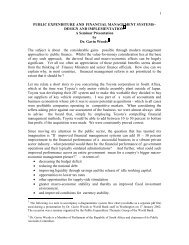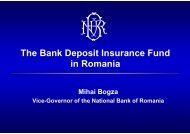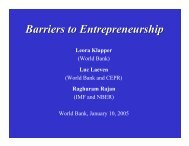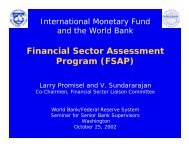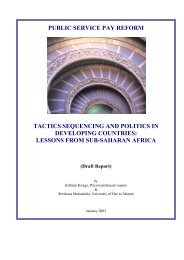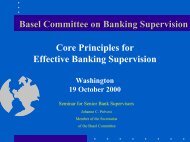CORRUPTION ASSESSMENT: MOZAMBIQUE - World Bank
CORRUPTION ASSESSMENT: MOZAMBIQUE - World Bank
CORRUPTION ASSESSMENT: MOZAMBIQUE - World Bank
Create successful ePaper yourself
Turn your PDF publications into a flip-book with our unique Google optimized e-Paper software.
accordance with the new USAID Anticorruption Strategy, 1 this assessment examines alllevels of corruption (petty, grand and state capture) and the key sectors and functionswhere corruption has impaired governance capacity and the achievement of developmentobjectives.This report presents the findings of a corruption assessment conducted by a team fromUSAID/Washington and Management Systems International, from August 8 - 23, 2005.In the course of the assessment, the team held meetings with governmental andnongovernmental stakeholders, gathered data, and reviewed documents. The MSI teamconsisted of Dr. Bertram Spector, Miguel Schloss, and Sammi Green; the USAID teamconsisted of Dr. Elizabeth Hart and Tye Ferrell.This team would like to extend its thanks to the USAID/Mozambique Advisory Teamthat was established to advise our efforts. We are grateful to all those who granted ustheir time and thoughts on these sensitive issues – from the community of USAIDimplementing partners, international donor organizations, government officials, and localNGOs, businesses and journalists.The content and conclusions of this report are the authors and do not necessarily reflectthe policies or opinions of the United States Agency for International Development(USAID).2. Overview of Corruption in MozambiqueMozambique is a country of stark contrasts – an electoral democracy with virtual onepartyrule, a country ruled by a sophisticated legal framework that is selectivelyimplemented, a national economy that has transitioned from a socialist system to onewhere business and political interests are closely intertwined, a land in which publicsector corruption is a relatively recent phenomenon but is too easily tolerated either dueto resignation, fear, or simply a spirit of “deixa andar” (“let it go”). Taken as a whole,these contrasting political and economic dynamics yield a picture of a country deeplythreatened by corruption at all levels.While much of this report will discuss institutional and procedural weaknesses thatcontribute to pervasive corruption at the administrative level—the near-daily bribesrequired to pass through police roadblocks, register a child in school, deal with variousinspectors, or get faster treatment at a clinic—it is critically important that these problemsbe seen through the lens of the broader political and economic context that discouragesaccountability and presents limited incentives to leaders to change the status quo. Grandcorruption—the participation of elites in self-dealing and other efforts to consolidate andprotect their hold on power and wealth—is the critical problem in Mozambique. Without1Adopted in 2005, the USAID Anti-Corruption Strategy addresses four broad actions: (1) confront thedual challenges of grand and administrative corruption, (2) deploy Agency resources to fight corruption instrategic ways, (3) incorporate anti-corruption goals and activities across Agency work, and (4) build theAgency’s anti-corruption knowledge.FINAL REPORT 5


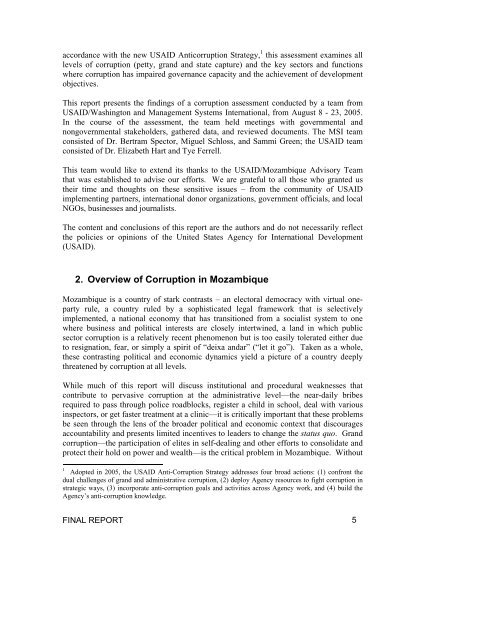
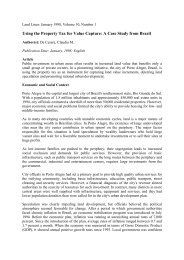

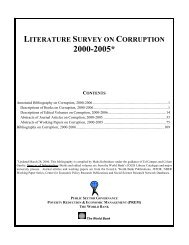
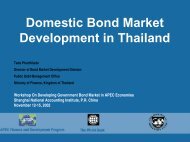
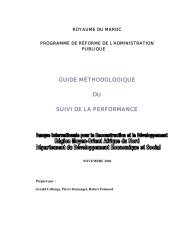
![Budget Execution: Overview [PDF 453K]; Bill Dorotinsky - World Bank](https://img.yumpu.com/47844909/1/190x143/budget-execution-overview-pdf-453k-bill-dorotinsky-world-bank.jpg?quality=85)
